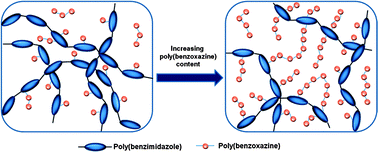Durable cross-linked copolymer membranes based on poly(benzoxazine) and poly(2,5-benzimidazole) for use in fuel cells at elevated temperatures†
Abstract
Cross-linked

* Corresponding authors
a
Department of Chemical and Biological Engineering and Institute of Chemical Process, Seoul National University, 599 Gwanak-ro, Gwanak-gu, Seoul, Republic of Korea
E-mail:
jongchan@snu.ac.kr
Fax: +82 2 880 8899
Tel: +82 2 880 7070
b Energy Lab., Samsung Advanced Institute of Technology, Samsung Electronics Co., Ltd., Nongseo-dong, Giheung-gu, Gyeonggi-do, Republic of Korea
Cross-linked

 Please wait while we load your content...
Something went wrong. Try again?
Please wait while we load your content...
Something went wrong. Try again?
S. Kim, T. Ko, S. Choi, J. O. Park, K. Kim, C. Pak, H. Chang and J. Lee, J. Mater. Chem., 2012, 22, 7194 DOI: 10.1039/C2JM15497H
To request permission to reproduce material from this article, please go to the Copyright Clearance Center request page.
If you are an author contributing to an RSC publication, you do not need to request permission provided correct acknowledgement is given.
If you are the author of this article, you do not need to request permission to reproduce figures and diagrams provided correct acknowledgement is given. If you want to reproduce the whole article in a third-party publication (excluding your thesis/dissertation for which permission is not required) please go to the Copyright Clearance Center request page.
Read more about how to correctly acknowledge RSC content.
 Fetching data from CrossRef.
Fetching data from CrossRef.
This may take some time to load.
Loading related content
